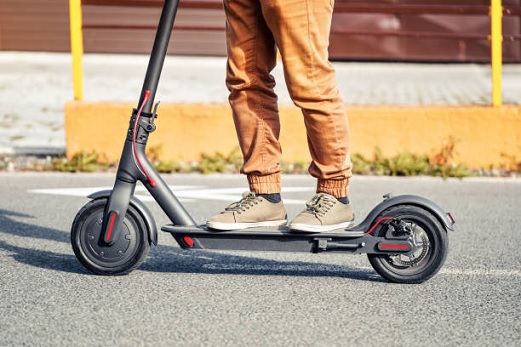In the world of personal mobility and action sports, scooters have carved out their niche as a fun and practical means of transportation and entertainment. While scooters may seem simple at first glance, a closer look reveals that they are finely tuned machines composed of various components. Among these, scooter wheels play a crucial role in determining the ride’s comfort, performance, and style. In this essay, we will delve into the world of scooter wheels, exploring their diverse characteristics, evolution, and impact on the scooter riding experience.
Scooter Wheels: Small Components, Big Impact
Scooter wheels are often underestimated. They are the four unsung heroes that make every scooter ride smooth, efficient, and enjoyable. Whether you’re commuting to work, navigating through the streets, or performing tricks at the local skate park, when you buy Envy scooter wheels, they could play a pivotal role in making it all possible.
The Anatomy of Scooter Wheels
To understand the significance of scooter wheels, it’s important to break down their components:
Core: The core of a scooter wheel is the inner hub that connects the wheel to the axle. Cores can be either solid or hollow, with various designs and shapes. The core affects the overall weight and durability of the wheel.
Urethane Formula: Like skateboard wheels, scooter wheels are made from urethane. The urethane formula determines the wheel’s hardness, grip, and shock absorption. Softer urethane provides better grip and a smoother ride, while harder urethane is more durable and suitable for tricks and jumps.
Durometer: The scooter wheel durometer is measured on the A-scale, similar to skateboard wheels. Softer wheels (around 80A-88A) provide excellent grip, making them ideal for street riding. Harder wheels (around 89A-100A) are better for skate park and ramp riding.
Wheel Size: The size of scooter wheels is measured in millimetres (mm). Smaller wheels (100mm or less) are more stable and responsive, making them suitable for technical tricks and street riding. Larger wheels (110mm or more) provide more speed and stability, making them ideal for ramps and downhill riding.
Profile: Scooter wheels come in different profiles, such as flat, round-edged, or spoked. The profile affects how the wheel interacts with the riding surface, providing different levels of grip and control.
Evolution of Scooter Wheels
Scooters have come a long way since their inception as a child’s toy. Originally, scooters were equipped with small, solid rubber wheels, suitable for smooth pavement but lacking grip and shock absorption. As the popularity of scooters grew among riders of all ages, so did the need for specialized scooter wheels.
The breakthrough in scooter wheel technology came with the introduction of polyurethane wheels. Just like skateboarding, the transition to urethane wheels revolutionized the scooter riding experience. Urethane wheels offered superior grip, smoother rides, and the ability to perform a wide range of tricks and manoeuvres.
As the sport continued to evolve, scooter wheels underwent further advancements. Manufacturers developed specialized urethane formulas, varying durometers, and sizes to cater to different riding styles. Scooter wheels now come in a wide range of options, allowing riders to fine-tune their setup to match their preferences.
Choosing the Right Wheels
Selecting the appropriate scooter wheels is essential for an enjoyable and safe riding experience. The choice of wheels significantly influences the scooter’s performance, responsiveness, and style. Here are some factors to consider when choosing scooter wheels:
Riding Style: Your preferred riding style and the type of terrain you encounter are crucial in selecting wheels. If you primarily ride in the streets and enjoy tricks, softer, smaller wheels offer grip and manoeuvrability. For skate park and ramp riding, harder, larger wheels provide speed and stability.
Durometer: Consider the durometer that matches your riding style. Softer wheels are more forgiving and provide grip, making them suitable for beginners and street riders. Harder wheels offer control and durability, ideal for experienced riders performing tricks.
Wheel Size: Wheel size impacts the stability, speed, and manoeuvrability of your scooter. Smaller wheels are more responsive and suitable for tricks, while larger wheels offer speed and stability.
Profile: The wheel’s profile affects grip and control. Experiment with different profiles to find the one that complements your style.
Brand and Quality: Reputable scooter wheel brands have a history of producing high-quality wheels. Investing in a trusted brand ensures durability and performance.
The Impact of Scooter Wheels on Riding Culture
Scooter wheels have played a pivotal role in shaping the scooter riding culture. They have allowed riders to explore various styles, from the streets to skate parks, and even off-road trails. The diverse range of wheels available has made scootering an inclusive activity, attracting riders of all ages and skill levels.
Scooter wheels have also been a canvas for artistic expression. Many scooter brands feature unique graphics and designs on their wheels, adding a touch of personal style to the scooter setup. These graphics often reflect the cultural influences and aesthetics of the scootering community, further enriching the experience.
Conclusion: Rolling Forward with Scooter Wheels
Scooter wheels, often overlooked, are the silent heroes that keep the wheels turning in the world of scootering. The evolution of scooter wheels parallels the development of scooter culture, enabling riders to explore new frontiers and express themselves through their unique riding style.
As scooter riders continue to push the boundaries of what’s possible on their scooters, scooter wheels will remain an integral part of this journey. With advancements in technology and a growing variety of options, scooter wheels will continue to adapt to the changing landscape of scootering, ensuring that riders can roll forward smoothly and safely, whether they’re navigating city streets, skate parks, or challenging off-road terrains.
